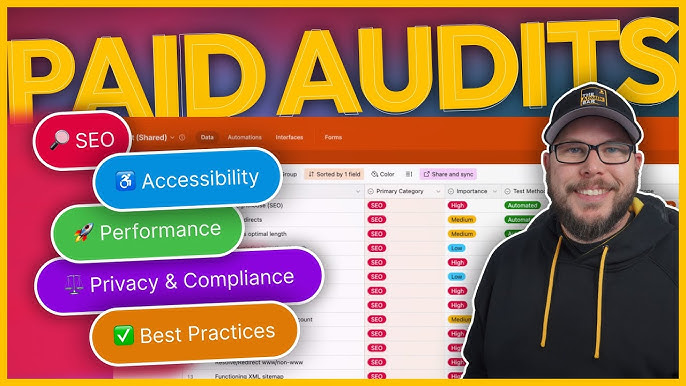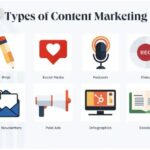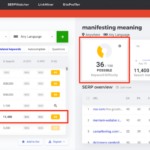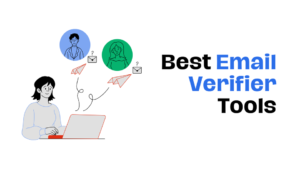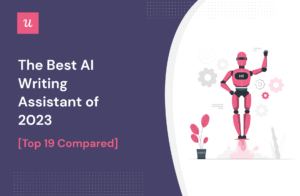Struggling with SEO performance issues? You’re not alone.
Many websites face these challenges. SEO performance issues can derail your online success. Slow load times, poor keyword targeting, and low-quality content can harm your rankings. Understanding the root causes of these problems is crucial. This blog will explore common SEO performance issues and provide practical solutions. Overcoming SEO challenges requires a comprehensive approach that includes technical optimization, content strategy, and ongoing monitoring. By addressing these issues head-on, you can improve your website’s visibility and ultimately drive more organic traffic. With the right strategies in place, you can overcome SEO challenges and position your website for long-term success.
Boosting your site’s visibility and traffic is within reach. Stay tuned to learn how to identify and fix these issues. Let’s dive in and enhance your SEO strategy today.
Credit: www.reddit.com
Table of Contents
ToggleCommon Seo Mistakes
SEO is crucial for driving traffic to your website. But many make mistakes that hinder their progress. Let’s explore some common SEO mistakes.
Keyword Stuffing
Keyword stuffing involves overusing keywords in your content. This practice was popular in the early days of SEO. But now, it can harm your rankings.
Search engines prioritize content that reads naturally. If your content is stuffed with keywords, it can feel forced and unreadable.
Here are a few signs of keyword stuffing:
- Keywords are repeated several times in a single paragraph.
- Keywords appear in an unnatural way.
- Content lacks flow and coherence.
Instead, focus on creating valuable content. Use keywords sparingly and where they fit naturally.
Duplicate Content
Duplicate content can confuse search engines. They struggle to determine which version to rank. This can dilute your SEO efforts.
Common sources of duplicate content include:
- Similar product descriptions on e-commerce sites.
- Copied articles from other websites.
- Multiple URLs leading to the same content.
To avoid this, create unique content. Use canonical tags to tell search engines which version to index.
Ignoring Mobile Optimization
Many users access websites on mobile devices. Ignoring mobile optimization can drive these users away. This can result in higher bounce rates.
Google also uses mobile-first indexing. This means it primarily uses the mobile version of your site for ranking.
Here are some tips to improve mobile optimization:
- Use a responsive design.
- Ensure fast loading times.
- Make navigation simple and intuitive.
By optimizing for mobile, you can enhance user experience. This can lead to better engagement and higher rankings.
Technical Seo Challenges
Technical SEO challenges can drastically affect your website’s performance. These issues can hinder search engines from crawling and indexing your site properly. Addressing these challenges is crucial for improving your site’s visibility and ranking. Technical SEO challenges can range from slow page loading speed to broken links, and can have a negative impact on user experience as well as search engine ranking. By addressing these SEO ranking challenges, you can ensure that your website is performing at its best and is able to attract more organic traffic. It is essential to regularly monitor and optimize your site for technical SEO issues to maintain a strong online presence.
Slow Page Speed
Page speed plays a vital role in user experience and SEO. Slow loading pages can frustrate users and increase bounce rates.
Consider the following factors to improve page speed:
- Optimize images: Compress and resize images to reduce load time.
- Minify CSS and JavaScript: Remove unnecessary code to enhance speed.
- Use a Content Delivery Network (CDN): Distribute content to servers worldwide.
Broken Links
Broken links can lead to poor user experience and lower search rankings. Users encountering 404 errors may leave your site quickly.
| Type | Impact |
|---|---|
| Internal Links | Disrupts navigation within the site |
| External Links | Reduces credibility and user trust |
Regularly check for broken links using tools like Google Search Console or Screaming Frog. Fixing broken links can improve user experience and SEO performance.
Poor Site Architecture
A well-structured site helps search engines and users navigate easily. Poor site architecture can confuse both search engines and visitors.
To enhance site architecture:
- Organize content logically: Group related content under relevant categories.
- Implement a clear URL structure: Use descriptive URLs for easy navigation.
- Create an XML sitemap: Help search engines understand your site structure.
Improving site architecture can lead to better indexing and higher search rankings.
Content Quality Issues
Content quality issues can severely impact your SEO performance. Poor content quality can lead to lower search engine rankings and reduced user engagement. Let’s explore some common content quality issues that could be affecting your SEO.
Thin Content
Thin content is content that has little or no value to the user. Search engines, like Google, prefer content that is informative and comprehensive. Pages with thin content usually have low word count and lack depth.
- Low word count articles
- Duplicate content
- Pages with little information
To fix thin content, consider adding more valuable information. Use detailed explanations and relevant images. Make sure your content answers the user’s questions thoroughly.
Irrelevant Keywords
Using irrelevant keywords can confuse both users and search engines. Keywords should be closely related to the content of your page. Irrelevant keywords can lead to a poor user experience and higher bounce rates.
| Issue | Example |
|---|---|
| Keyword Stuffing | Repeating keywords excessively |
| Unrelated Keywords | Using keywords not related to the content |
Focus on using relevant keywords that match user intent. Use tools like Google Keyword Planner to find appropriate keywords for your content.
Outdated Information
Outdated information can harm your website’s credibility. Users trust websites that provide the most current and accurate information. If your content is outdated, users are likely to leave your site quickly.
- Check for outdated statistics
- Update old references
- Regularly review and refresh content
Keeping your content updated shows that your site is reliable. Regular updates can improve your search engine rankings and user trust.

Credit: creativo.io
On-page Optimization
On-page optimization is critical for improving your website’s search engine performance. It involves optimizing individual web pages to rank higher and earn more relevant traffic in search engines. This process includes various elements like title tags, meta descriptions, header tags, and image alt text. Let’s dive into these essential components of on-page optimization.
Title Tags And Meta Descriptions
Title tags and meta descriptions play a significant role in on-page optimization. The title tag is the clickable headline that appears on search engine results pages (SERPs). It should be concise, relevant, and include your primary keyword.
- Keep it under 60 characters.
- Include the primary keyword at the beginning.
- Make it compelling to improve click-through rates.
Meta descriptions provide a brief summary of the page’s content. They appear below the title tag on SERPs. A well-crafted meta description can significantly impact your click-through rates.
- Keep it under 160 characters.
- Include the primary keyword and a call-to-action.
- Ensure it accurately reflects the page content.
Header Tags
Header tags (H1, H2, H3, etc.) structure your content and make it easier to read. They also help search engines understand the hierarchy of your content.
- Use one H1 tag per page. It should include the primary keyword.
- Use H2 tags for main sections and H3 tags for subsections.
- Ensure header tags are descriptive and relevant to the content.
Image Alt Text
Image alt text is a description of an image that helps search engines understand the content of the image. It also improves accessibility for users with visual impairments.
- Include keywords in the alt text.
- Keep it descriptive and relevant to the image.
- Avoid keyword stuffing.
Properly optimized images can also improve your page load speed, contributing to a better user experience.
Backlink Problems
Backlink problems can significantly affect your SEO performance. Understanding and addressing these issues is crucial for maintaining a healthy website ranking. In this section, we will explore common backlink problems that can hinder your SEO efforts.
Low-quality Backlinks
Low-quality backlinks come from spammy or irrelevant websites. These links can harm your site’s credibility. Search engines, like Google, may penalize your website if it has too many low-quality backlinks. To avoid this, regularly audit your backlink profile.
- Identify spammy links
- Disavow bad backlinks
- Seek high-quality backlinks
Unnatural Link Patterns
Unnatural link patterns can signal manipulation to search engines. This includes sudden spikes in links or links from unrelated niches. Such patterns can result in penalties. To maintain a natural link profile, focus on organic link-building strategies.
- Build links gradually
- Ensure link diversity
- Engage with relevant sites
Lack Of Authoritative Links
Authoritative links come from well-respected websites. They boost your site’s credibility and ranking. A lack of these links can limit your SEO performance. To gain authoritative links, create valuable content and build relationships with industry leaders.
| Action | Benefit |
|---|---|
| Create high-quality content | Attracts natural backlinks |
| Network with influencers | Increases link opportunities |
| Guest post on reputable sites | Boosts site authority |

Credit: forum.bubble.io
User Experience Factors
User experience (UX) significantly impacts SEO performance. A seamless UX keeps users engaged and reduces bounce rates. Addressing user experience factors can lead to better rankings and higher conversions.
High Bounce Rate
A high bounce rate indicates users leave your site quickly. This often signals poor user experience or irrelevant content. To reduce bounce rates, ensure your pages load quickly and have engaging content. Use attractive headlines and visuals to grab attention.
Consider the following tips to lower bounce rates:
- Improve page load speed
- Ensure mobile-friendliness
- Provide clear and engaging content
- Use internal linking to keep users exploring
Poor Navigation
Poor navigation confuses users and frustrates them. It makes it hard to find the information they need. This can lead to higher bounce rates and lower user satisfaction. Creating an intuitive navigation structure is crucial for a positive user experience.
Effective navigation includes:
- Clear and concise menu labels
- Logical and intuitive menu structure
- Breadcrumbs for easy backtracking
- Search functionality for quick access
Intrusive Pop-ups
Intrusive pop-ups disrupt the user experience. They can be annoying and lead to a negative perception of your site. Google also penalizes sites with intrusive interstitials, affecting SEO rankings.
To minimize the impact of pop-ups, consider the following:
- Use pop-ups sparingly and strategically
- Ensure pop-ups are easy to close
- Provide value through your pop-ups, like exclusive offers
- Avoid full-screen pop-ups on mobile devices
Analytics And Tracking
Analytics and tracking are crucial for understanding your website’s SEO performance. They help identify areas for improvement and monitor the effectiveness of your strategies. Proper implementation can lead to better decision-making and increased visibility in search engines. Let’s explore common issues in this area.
Incorrect Tracking Codes
Incorrect tracking codes can lead to inaccurate data. Many websites suffer from this problem. Common mistakes include:
- Placing the tracking code in the wrong section of the HTML
- Using outdated or incorrect tracking code versions
- Not updating tracking codes after website redesigns
Ensure your tracking code is in the right place. Always use the most recent version. Regularly check and update your tracking codes to avoid data discrepancies.
Lack Of Goal Setting
Without proper goal setting, tracking data becomes meaningless. Goals help measure the success of your SEO efforts. Common goals include:
- Increasing organic traffic
- Boosting conversion rates
- Reducing bounce rates
Set clear, actionable goals. Use analytics tools to track your progress. Adjust your strategies based on the data collected.
Ignoring Analytics Data
Ignoring analytics data is a major issue. Many businesses collect data but do not act on it. This leads to missed opportunities for improvement. Here are some key points:
- Regularly review your analytics reports
- Identify patterns and trends in the data
- Make data-driven decisions to improve your SEO
Use your analytics data wisely. It is a powerful tool for enhancing your SEO performance.
Algorithm Updates
Understanding SEO performance issues often starts with algorithm updates. These updates can significantly impact website rankings. Staying informed about these changes is crucial for maintaining a strong online presence. Keeping track of algorithm updates is just one aspect of monitoring SEO performance. It’s also important to regularly analyze website metrics and keyword performance to identify areas for improvement. Tools like mangools features overview can provide valuable insights and help track progress over time. By staying proactive and using these tools effectively, businesses can adapt to algorithm changes and maintain a competitive edge in the digital landscape.
Google Core Updates
Google rolls out core updates several times a year. These updates can affect search engine rankings. They aim to improve the relevance and quality of search results. If your site’s traffic drops, a core update might be the cause.
Here are some key points to consider:
- Review Google’s official announcements.
- Analyze traffic changes using Google Analytics.
- Update your content to meet new quality standards.
Penalty Recovery
Penalties can severely impact your site’s visibility. Penalty recovery involves identifying and fixing the issues that led to the penalty. Common penalties include:
- Manual actions due to spammy backlinks.
- Thin content or keyword stuffing.
Steps for recovery:
- Use Google Search Console to identify the penalty.
- Remove or disavow harmful backlinks.
- Improve content quality and relevance.
- Submit a reconsideration request if needed.
Staying Informed
Staying informed about algorithm updates is essential. Here are some tips:
- Follow SEO blogs and forums.
- Subscribe to Google’s Webmaster Central Blog.
- Join SEO communities on social media.
Keeping up with these updates helps you adapt your strategies. It ensures your website remains competitive in search rankings.
What Are the Top Solutions for Overcoming SEO Challenges and Boosting Rankings?
When it comes to overcoming seo challenges to boost rankings, there are several effective solutions. Conducting thorough keyword research, optimizing website content, building quality backlinks, and staying updated with algorithm changes can all contribute to improving SEO performance and ultimately boosting rankings.
What are the top solutions to boost website rankings and SEO performance?
Looking to boost your seo? Implementing quality content, optimizing your website for speed, and building high-quality backlinks are all effective strategies. Additionally, focusing on user experience and leveraging the power of social media can also help improve your website rankings and overall SEO performance.
Frequently Asked Questions
What Are Common Seo Performance Issues?
Common SEO performance issues include slow site speed, poor mobile optimization, duplicate content, and broken links. These issues can impact your search rankings and user experience negatively.
How Can Slow Site Speed Affect Seo?
Slow site speed can lead to higher bounce rates and lower search engine rankings. Search engines prioritize fast-loading websites to enhance user experience.
Why Is Mobile Optimization Important For Seo?
Mobile optimization is crucial because more users access the web via mobile devices. A poorly optimized mobile site can result in lower rankings and user dissatisfaction.
How Do Broken Links Impact Seo?
Broken links can harm user experience and lower your site’s credibility. Search engines may penalize websites with numerous broken links, affecting your rankings.
Conclusion
Addressing SEO performance issues is crucial for your website’s success. Regularly monitor your site’s performance. Identify and fix any problems promptly. Always focus on quality content and user experience. Optimize your keywords, meta descriptions, and images. Ensure your website loads quickly.
Mobile-friendliness is key. Stay updated with SEO trends. Implement these strategies consistently. Your website will see improved rankings. Better visibility means more traffic. Ultimately, this leads to growth. Keep refining your SEO approach. The effort will pay off.

